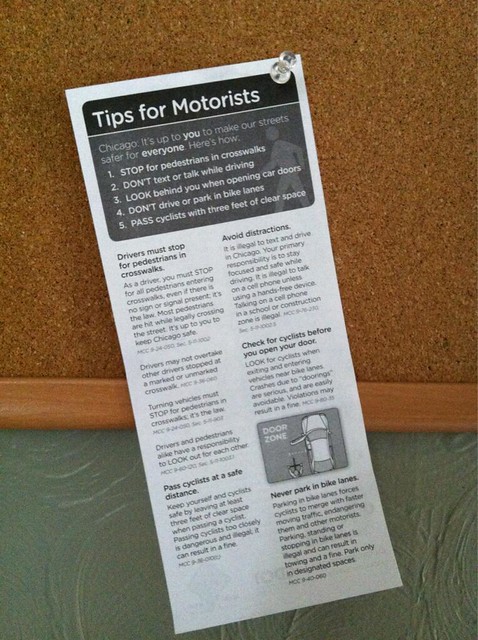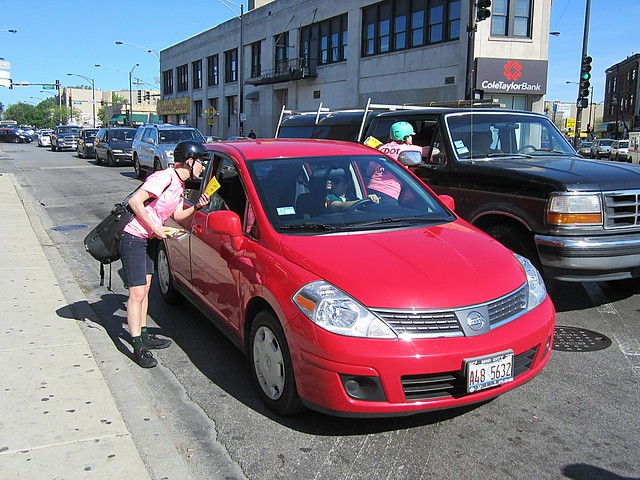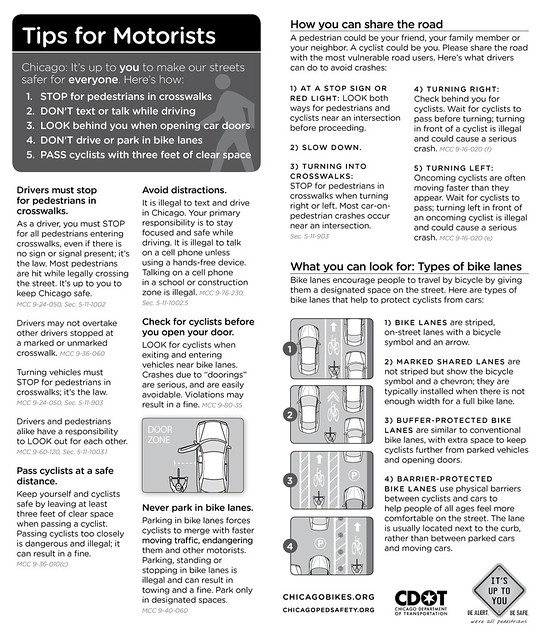Since the third week of May, 1.55 million Chicagoans (!) have received a double-sided leaflet called "Tips for Motorists" informing people how to "make our streets safer for everyone." The mailing, sent by the City Clerk's office with the car sticker renewal form, was three years in the making and likely has the lowest cost of any outreach that the Chicago Department of Transportation has ever initiated. CDOT paid $8,000 for printing and contributed about $1,000 in postage fees, according to bike and pedestrian safety manager Charlie Short.
Many Streetsblog readers reported receiving it – yes, they drive cars, too. Having drivers also bike is a key part of bicycle culture and safety. In the Netherlands, most drivers also bike at least once a week, so they know how to drive safely around cyclists.
CDOT's flyer clears up a lot of issues related to the core question, "What am I supposed to do around a bicyclist or a pedestrian?" It counsels drivers to check for cyclists before opening their car door, to stop for pedestrians in crosswalks, and other common-sense safety steps that too often go unobserved.
The mailing fulfills part of the Bike 2015 Plan ("Integrate more 'Share the Road' material into driver education materials"). Short says he hopes to use a successful mailing with the City Clerk's office as a way to get the Secretary of State to do something similar. Similar material could go out in license renewal notices to all Illinoisans.
A different "Tips for Motorists" brochure is available for perusal at the DMV inside the Thompson Center, downtown (but not at the second downtown DMV). "We at least want to ensure that the flyers are available at all Chicago DMVs," said Short
Short said he started working on the widespread mailing idea with the City Clerk's office in 2010.
A similar mailing was sent to Boston drivers in March 2012, explaining all of the new pavement markings "cropping up around the city." CDOT's version does the same thing, showing drawings of sharrows and bike lanes.
Will this be successful? Short said they've received 20-25 positive emails from "citizen's we've never heard from before, folks who sought us out." I asked Short if he's thought about doing "A/B testing," wherein two designs are made and sent to different people to gauge the effectiveness of the designs. Short said they've been so busy with the spring marketing campaign – including restriped "LOOK" stencils at crosswalks – that it hasn't come up.
This heavy outreach program has a lot of potential and it shows that funds, or lack thereof, are rarely the reason for doing, or not doing, things that increase the level of safety for the street's most vulnerable users. All it takes is time, patience, and staff resources.








